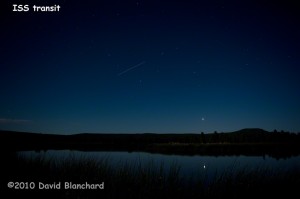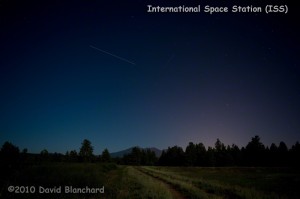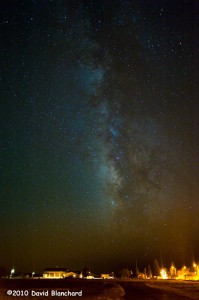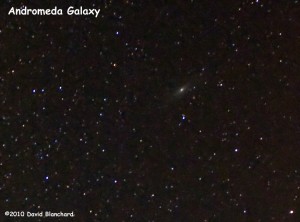The satellite flyby tables (mentioned in a previous post) indicated that there would be a favorable pass of the International Space Station this evening. The ISS would pass by Saturn, Mars, and Venus in the course of a minute or two in mid evening.
I wandered out to the Kachina Wetlands hoping to get good star and planet reflections in the water. It had been windy all day but by evening the wind had diminished and the water was smooth and glassy. Perfect for reflections.
It’s a tradeoff when it comes to shutter speed when imaging a transit of the ISS. A longer exposure will produce a longer track of the ISS while a shorter exposure will result in sharp points for the stars instead of blurred tracks. After a few test shots I decided that 20s was about right. Below are two images of the ISS. The first includes a very bright Venus near the horizon as well as its reflection with the ISS moving below the planet Mars (above and left of the track).

The second image was taken as the ISS was descending into the northern sky with the San Francisco Peaks in the background.

While setting up for the ISS transit I was saddened by the view of the Schultz Wildfire burning in the San Francisco Peaks. This fire has already burned over 14000 acres and is only partially contained. Many trails and forest service access roads have been destroyed by this fire. And, yet, the glow in the evening twilight and its reflection was fascinating.



